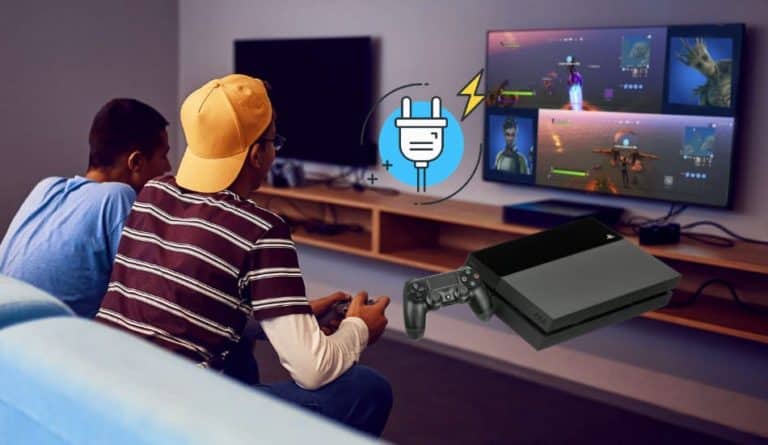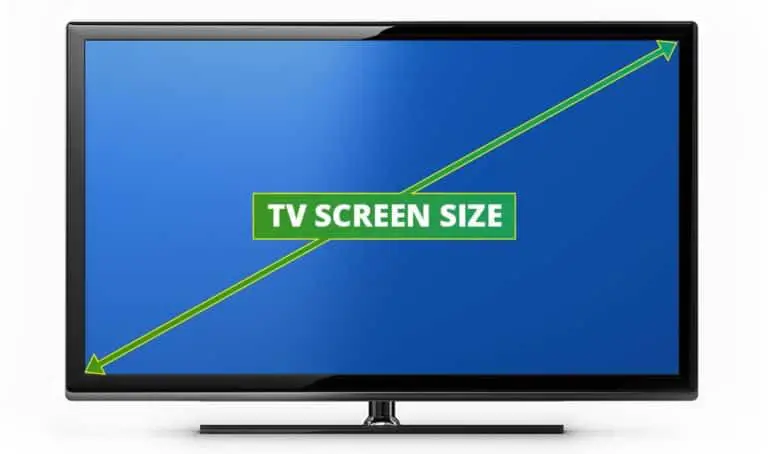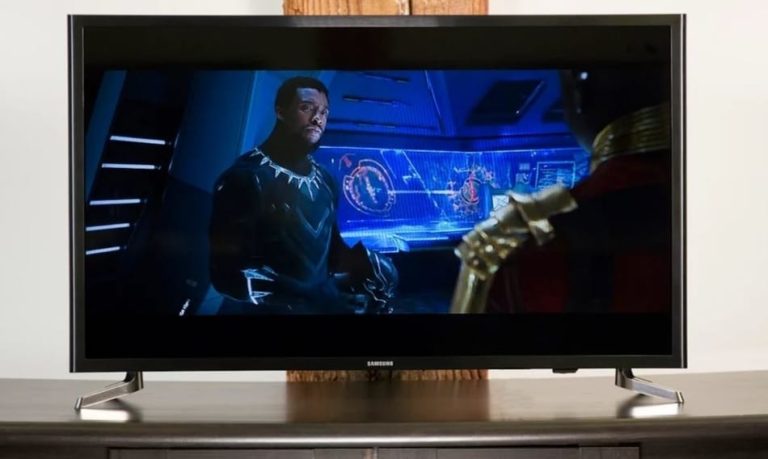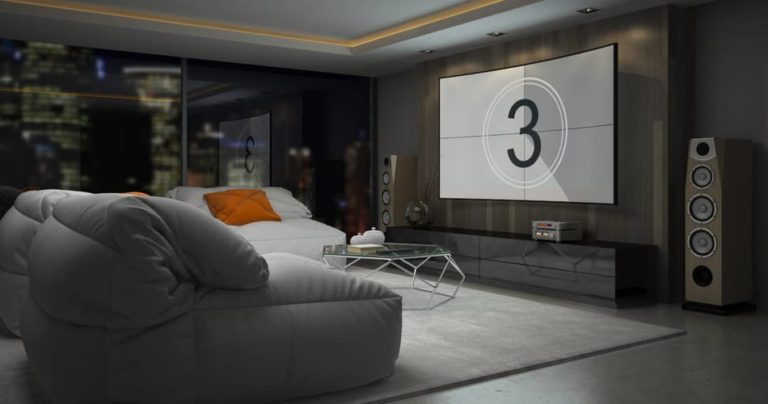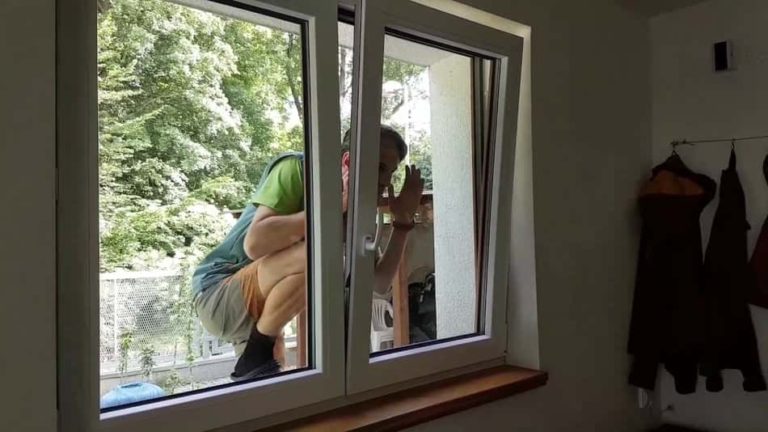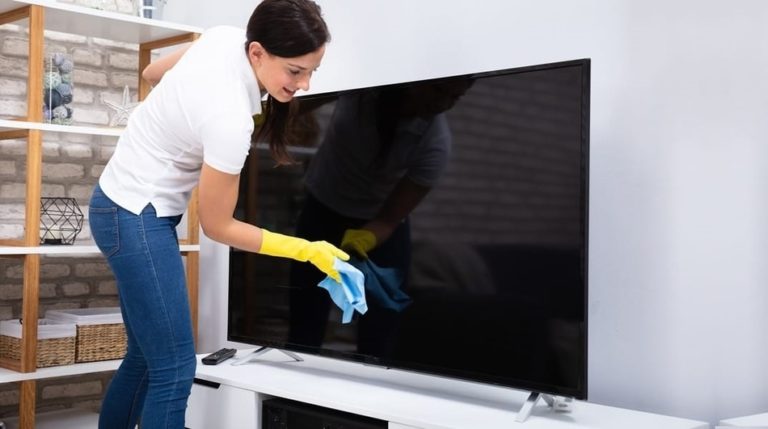Can a House Run on Solar Power Alone?
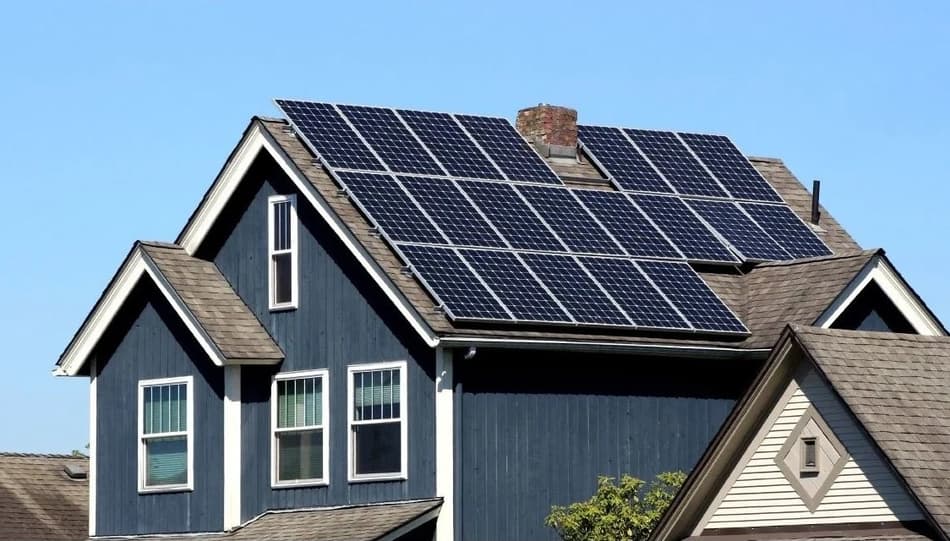
Did you know that in one day, the sun sends more energy to earth than humanity could consume in a year? A photovoltaic system converts the sun radiation energy into solar power, which can be used to power your house.
We all want to consume cleaner, greener, heat more cheaply, avoid energy losses, and contribute to the preservation of the environment, but if possible, without straining our budget. The solar house responds favorably to these parameters, thanks to many advantages. In this article, we will explain how a solar power system works and can a house run completely on solar power.
So Can a House Run on Solar Power Alone? The house can run on a solar power system alone. To do that, you must have enough solar battery storage installed in your home so you can use that stored power during the rest of the day, night or during very cold weather.
Table of Contents
How Much Power (kW) Is Needed to Run an Average Home?
When planning a photovoltaic system, consumers usually aim for a high yield. This should cover the needs in-house or ensure quick amortization when feeding in. One of the most important criteria in relation to solar power is the performance per area related to one square meter. Manufacturers state this in watts or kilowatts peak (solar power in kWp). This so-called nominal power is based on standardized measurements in the laboratory. A 7 to 11 square meters module area is required per 1-kilowatt peak.
In Central Europe, an annual solar power yield of 850 to 1,250 kilowatt hours per kilowatt peak is possible under favorable conditions. If homeowners want to cover an electricity consumption of 4,000 kWh, they need a module area of 30 to 40 square meters, at least in theory.
Because unlike the demand in the house, the solar power supply fluctuates over the course of the day and year. While homeowners produce a surplus in summer, solar power in winter is often not enough to meet current needs.
How Does House Use Energy from Solar Panels?
The solar modules in a photovoltaic system convert sunlight into electrical energy. The light of the sun causes an electrical voltage when it hits the solar cell. This is already removed from the surface. Several solar cells are electrically interleaved in a solar module of a photovoltaic system. The electrical voltage is added together in series. Each individual cell has about 0.6 volts.
A common module with approximately 60 cells generates a module voltage of approximately 36 volts in this way. Solar modules made of crystalline silicon (Si) are most commonly used. High-purity silicon (Si), which is obtained from quartz sand, is further processed for this. The efficiency of a solar module is between 11 and 16%. For example, modules made of crystal-pure silicon (Si) are used as standard on roof systems. If thin-film modules are used, the efficiency is much lower.
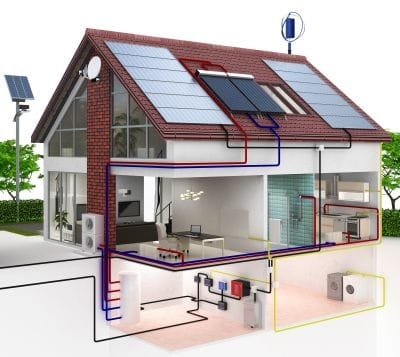
In the case of thin-film modules, the highest is 9%. Due to their extremely low cost, thin-film modules are particularly suitable for the operation of large systems, in which the space consumption is completely two-tier.
The following table gives an overview:
| Type of Solar Cells | Manufacturing and Construction | Efficiency |
|---|---|---|
| Monocrystalline cells | It is made from pure single crystals. Monocrystalline solar power cells can be recognized by their pure dark blue to blackish color. The production is energy-intensive. | about 14 to 18% |
| Polycrystalline cells | Polycrystalline solar power cells can be produced from blocks of several silicon crystals. Solar panels with polycrystalline cells can be recognized by the typical crystal structure. While the production uses less energy, the cells achieve lower efficiencies. | about 12 to 16% |
| Thin-film cells for photovoltaic solar power | The production is cheaper, the efficiency is worse. Another disadvantage: the performance of the cells deteriorates faster than with other types. | 6 to 8% |
How Much Cost To Run a House Fully On Solar
Whether profitability arises when using solar power depends on the cost of the technology. We consider a system with 4 kWp.
• The costs range from $ 1,500 to $ 1,700 per kWp, an average of $ 6,800.
If homeowners want to buy a larger solar power system, the purchase costs are usually cheaper in relation to the nominal output. There are additional costs for storing solar power. We assume lithium-ion battery storage with a capacity of 4 kWh. This costs an average of $1,000 to $1,500 per kWh. In the following, we expect a price of $5,000 for battery storage.
In addition, the price of electricity and the feed-in tariff also affect the profitability of a solar power system. The following example calculation is based on an electricity price of 28 cents per kWh and a feed-in tariff of 12.08 cents per kWh. When considering solar power profitability, we also assume an annual electricity price increase of 3%.
What is a Passive Solar House?
The passive solar house is designed to make the most of solar radiation in all seasons: heat in winter, freshness in summer, and electricity during the day and night. So, Passive solar houses use the sun’s heat absorbed by solar panels and convert that heat into electrical energy. The design of this type of house requires a precise estimate of its energy needs and the establishment of a system capable of meeting it.
Obtain optimal comfort, in the most natural way possible. The use of mechanized systems and other forms of energy is minimized. Did you know that hot water and heating represent on average 70% of energy consumption in a house for its owner? The remaining 30% is used by electrical devices. The passive solar house considerably reduces the energy consumption linked to heating.
Things to Consider Before Your House is 100% Run on Solar Power
Among the determining criteria for the construction of a passive house number 1 is of course the sun. Sun exposure is, therefore essential. The choice of materials, insulation in particular, as well as air circulation and sealing then allow balancing the heat flows in the house.
Keep in mind that you Need to Turn Off Your Home’s Electricity When you are installing solar panels on your house!
Therefore it is necessary to install bay windows facing south to take full advantage of the direct heat of the sun. During the day, the walls and the floor of the passive house store heat in what is defined as “thermal mass”. The thermal mass returns the heat at night, thus contributing to a balanced temperature.
It is good to live in a passive house. The temperatures are pleasant, never too hot, never too cold and the air is healthy. From an economic point of view, it is also a very good deal. What has been invested in building materials and design is quickly amortized by substantial energy savings. From 50% to 90% on the heating bill compared to a conventional house, it is not nothing!
Using Solar Power Over the Course of The Year
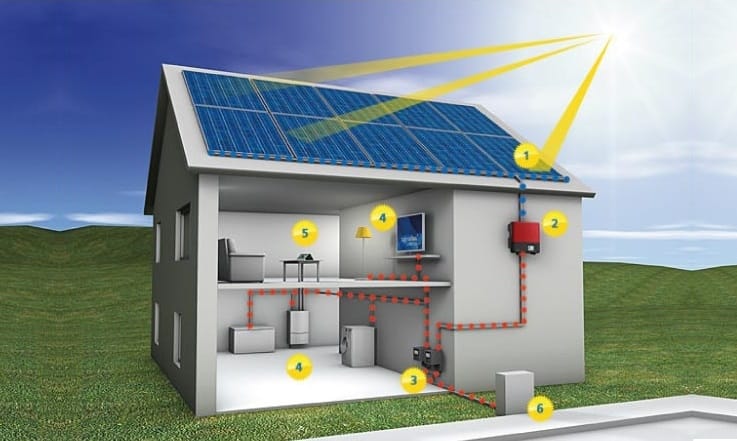
While the sun is long over the house in summer, the days in winter are short and cloudy. These factors also affect the yield of solar power over the course of the year. From October to March, photovoltaic systems only generate just under 30 percent of the year-round yield. They produce about 70 percent in the summer half-year. More specifically:
• In winter the yield is around 10 to 40 kWh per kWp and month
• In summer the yield is around 100 to 150 kWh per kWp and month
A look at the annual distribution of solar power shows: If you want to make yourself independent, you have to plan the system so that it can generate enough electricity, especially in the dark season.
Can Solar Panels Work On Cloudy Days?
Yes, Solar panels can work on cloudy days. Better said, without direct sunlight. The modules can gain about 0.5 times the specified nominal power in electrical energy when the sky is overcast. On a cloudy and short winter day, that’s about 500 Wh (watt-hours) or 0.5 kWh per kWp. The situation is different with solar power at night.
Even if the full moon fills our streets with light, this is hardly enough to generate electricity from the photovoltaic cells. If homeowners need a lot of solar power at night, they can use the energy from battery storage. They are charging during the day and then releases the electrical energy to the consumers in the house with a time delay.
Do You Need Battery Storage If You Run House On Solar?
If you want to consume solar power directly without a battery or storage, you usually achieve a self-consumption rate of around 20%. If you want your house to work at night or on cold winter days, you need battery storage. The average American citizen consumes 30 kilowatt-hours (kWh) energy per day.
So, by that calculation you will need a solar battery with 30 kWh capacity. However, since the yield of a photovoltaic system is comparatively low in winter, the night storage systems still require energy from the battery in addition to solar power.
Related Article: 6 Ways to Remove A Key Stuck in Lock
The Pros and Cons of Solar Power
A solar power system can be financially worthwhile. Consumers can get their own electricity and become independent of large energy suppliers. The constantly fluctuating electricity prices will hardly impact houses on solar power.
Another advantage is that solar power is a green and environmentally friendly alternative to mains power, often from coal or nuclear power plants. The main disadvantage of a photovoltaic system is the high purchase costs. In addition, the house must be facing the sun. The roof should have the correct slope and can’t be shaded.
The following table gives an overview of the advantages and disadvantages of solar power:
| The Pros of Solar Power House | The Cons of Solar Power House |
|---|---|
| Independent and environmentally friendly power supply without CO2 emissions | Solar modules lose power over time; Inverters can fail |
| High savings through self-consumption | High acquisition costs and payback periods of 10 to 15 years |
| Sun as an inexhaustible source of energy | Roof area must be suitable |
| Low-maintenance and reliable technology | Homeowners may find solar modules to be unaesthetic |
| Flexible system size, suitable for the individual requirements | Supply of solar power fluctuates |
| Decentralized energy supply to relieve the electricity grids |
Final Thoughts
The main objective of the solar house is to produce a sufficient amount of energy to meet its own needs. Energy self-sufficient houses (100% Solar-Powered houses) are more and more used today in the world. Here we learned how we can use and store solar energy by supplying our house with electricity. Many critics are still skeptical when it comes to such houses, but the first practical examples prove that the concept can work.
Ultimately, it remains to be seen how quickly and in what direction this solar power technology will develop in the coming years. However, as of the current status, there is no doubt that it will become increasingly economical and therefore also more and more attractive to homeowners, builders, etc. All it takes is a little patience. I hope you liked the article, and if you have questions leave a comment below.


